
Find out the story of Italian architect David Fisher's ambitious plans to build a rotating skyscraper that features revolving floors. [1:24]
- Subject:
- Mathematics
- Science
- Material Type:
- Audio/Video
- Provider:
- Science for Kids
- Date Added:
- 10/01/2022

Find out the story of Italian architect David Fisher's ambitious plans to build a rotating skyscraper that features revolving floors. [1:24]

Science NetLinks is a premier K-12 science education resource produced by the American Association for the Advancement of Science. At Science NetLinks, you'll find teaching tools, interactives, podcasts, and hands-on activities, and all of it is free!
Science NetLinks provides K-12 teachers, students, and families with quality resources for teaching and learning science.
All of the resources are Internet based and free to everyone. Lessons and activities can be printed or used online. Many of the interactives, esheets, and tools work great on an interactive white board or in a computer lab. All of the resources are designed to be delivered in a variety of formats and classroom settings.
Science NetLinks' role is to provide a wealth of standards-aligned resources for K-12 science educators, including lesson plans, interactives and reviewed Internet resources. Science NetLinks is a dynamic site with new content being added on a regular basis, so check back often

This article reviews the book "Using Science Notebooks in Elementary Classrooms" by Michael Klentschy and provides basic information about the role of notebooks in instruction and assessment.
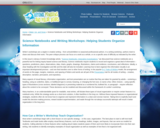
This article describes how elementary teachers can use modified writer's workshops to help students organize information in their science notebooks.
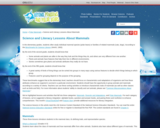
This article highlights science lessons about mammals, mammal diversity and adaptations, and polar mammals. Literacy integrations and alignment to national standards are included.
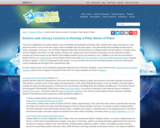
This article provides geography lessons to teach elementary students about the polar regions. Literacy extensions are included for each lesson.
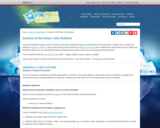
This article assembles free resources from the Science at the Poles issue of the Beyond Penguins and Polar Bears cyberzine into a unit outline based on the 5E learning cycle framework. Outlines are provided for Grades K-2 and Grades 3-5.
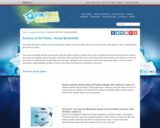
This article features children's literature about scientists and scientific research in the Arctic and in Antarctica.
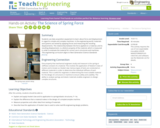
Students use data acquisition equipment to learn about force and displacement in regard to simple and complex machines. In the engineering world, materials and systems are tested by applying forces and measuring the resulting displacements. The relationship between the force applied on a material, and its resulting displacement, is a distinct property of the material, which is measured in order to evaluate the material for correct use in structures and machines.
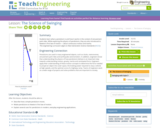
Students learn what a pendulum is and how it works in the context of amusement park rides. While exploring the physics of pendulums, they are also introduced to Newton's first law of motion about continuous motion and inertia.

Discover how the Supersoaker water gun was invented, and learn how an engineer uses physics and math to design other types of machines.

This DragonflyTV segment introduces NASA roboticist Dr. Ayanna Howard. Her job is to use artificial intelligence (AI) to build robots that can travel into space and other hazardous locations. In this segment, she discusses her work on a rover for use on Mars. Also available in Spanish. [2:07]
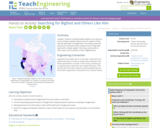
Cryptids, creatures of questionable existence, are used as a source of data to guide students into the creation of their own GIS data layer in Google Earth. The activity serves the purpose of a tutorial to teach students how to make data layers with a simple subject. Then they use that skill on other topics such as plastics in their neighborhood.
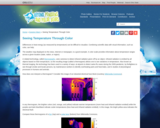
This article describes the basics of thermography or thermal imaging, and how this technique can inspire a data collection activity to teach about heat transfer and energy efficiency.
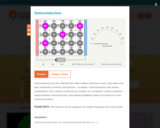
Semiconductors are the materials that make modern electronics work. Learn about the basic properties of intrinsic and extrinsic or 'doped' semiconductors with several visualizations. Turn a silicon crystal into an insulator or a conductor, create a depletion region between semiconductors, and explore probability waves of an electron in this interactive activity.

This issue of the free online magazine, Beyond Penguins and Polar Bears, examines how elementary teachers can introduce the Arctic and Antarctica and use science, geography, literacy, and technology to help students compare and contrast these two dramatically different areas as well as their own home.
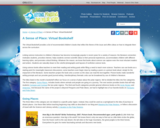
This article provides a list of children's literature relating to the geography and characteristics of the Arctic and Antarctica.
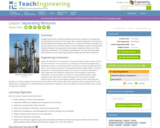
Students learn how to classify materials as mixtures, elements or compounds and identify the properties of each type. The concept of separation of mixtures is also introduced since nearly every element or compound is found naturally in an impure state such as a mixture of two or more substances, and it is common that chemical engineers use separation techniques to separate mixtures into their individual components. For example, the separation of crude oil into purified hydrocarbons such as natural gas, gasoline, diesel, jet fuel and/or lubricants.

A collection of interactives, videos, and documents on a variety science concepts.

Robert Full is interested in the biomechanics of arthropod movement. Arthropods move low to the ground using their legs in a tripod fashion, which is inherently stable. Their skeleton provides local control over movement. But the secret to their success is their jointed legs, which act as struts and shock absorbers. [7:15]